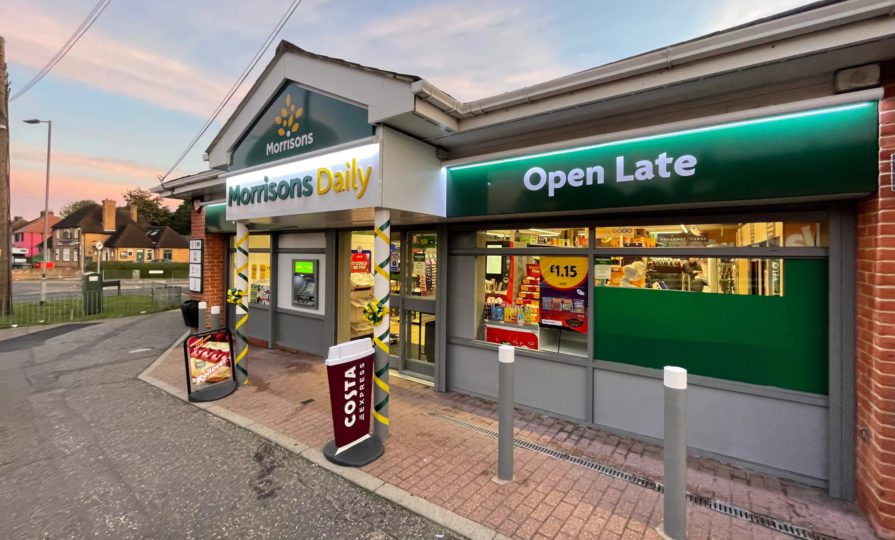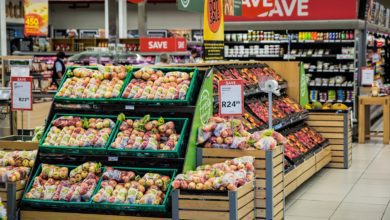Supermarket chains are betting big on small stores
Big stores are too slow for today’s shoppers; they want quick, local, and they want it now. And so, the race is on

Register to get 1 free article
Reveal the article below by registering for our email newsletter.
Want unlimited access? View Plans
Already have an account? Sign in
Asda plans to open 25 new convenience stores between June and December, having only opened 12 last year. As part of its latest turnaround strategy, the retailer is moving faster, cutting deeper, and getting closer to where people live.
It looks like other retailers are doing the same. Tesco, Waitrose – even Aldi – are chasing the same thing: smaller shops in smarter places like city centres, train stations, corners of busy streets.
Meanwhile, out of all the large supermarkets Morrisons is instead pulling back, announcing the closure of 17 convenience stores and over 50 cafés. The move looks like a retreat, but is it in itself a strategy?
Supermarket chains are aware of the changes taking place on the high street, and a part of that is shoppers’ preference for convenience. Big stores are too slow for today’s shoppers; they want quick, local, and they want it now. And so, the race is on. The question is: who will get there first – and who will get it right?
This didn’t happen by accident; supermarkets didn’t wake up one morning and decide they would like to open more small stores on a whim. It started with legislation. As Jenny Williams, retail planning director at OLIVER, explains, government restrictions on out-of-town megastores in the 1990s forced supermarket groups to adapt – shifting their focus to high streets and city centres. The move paid off. Today, with 80% of the UK population living in urban areas, smaller stores mean bigger reach, more faces through the door, and more chances to sell.
While there’s no more room to build out, there is opportunity to build in. And fortunately for this format, small stores punch above their weight.
Convenience stores also fit the way people shop now: not one big trip, but lots of little ones. Williams says: “As well as serving the key top-up and something for now/later missions, they deliver omnichannel integration via click-and-collect services. The format is also acting as a test bed for digitally led initiatives such as Aldi Shop and Go that further improve the speed and ease that convenience shoppers demand.”
While there’s no more room to build out, there is opportunity to build in. And fortunately for this format, small stores punch above their weight. The Co-op recently teamed up with Lumen Research to get hard data on how good convenience stores are at building brand awareness. The study found that shoppers don’t just visit small stores more often, they also see more products, remember more brands, and end up buying more. This is partly aided by a combination of tighter aisles, products being closer together, and ads being harder to miss. The results were clear: shoppers in small stores have twice the ad visibility, three times the attention, and four times the brand recall.
“We are not just seeing a convenience arms race, we are seeing a fundamental reshaping of the grocery landscape,” says Chris Camacho, chief executive of Cheil UK. “The rapid shift toward smaller format stores is not a trend, it is a strategic necessity. As shopping behaviours evolve, convenience is no longer about quick top-ups or forgotten essentials. It is about proximity, frequency, and emotional relevance.”
He adds: “Supermarkets like Asda are investing heavily in this space because they recognise the value of being physically embedded into daily routines. Smaller stores allow for hyper-local relevance, rapid response to consumer needs, and significantly higher brand visibility.”
That said, it’s getting crowded on the corner. “Competition for sites is fierce,” Williams says. “Retailers are increasingly seeking partnerships across other sectors, such as Tesco Express’s tie-up with Esso, to free up new opportunities.”
Retailers are betting on convenience to carry them forward but with each new opening, the margins tighten. Rents rise and sites dry up. And shoppers, more price-sensitive than ever, are watching every penny.
However, Kat Patterson, managing director of Art of the Possible, sees it as more than a land grab. “We’re absolutely seeing a ‘convenience arms race’ – but not everyone’s equipped to win it,” she said. “Morrisons scaling back might seem like a misstep, but it could also reflect discipline – a recognition that not all supermarkets have the brand equity, supply chain flexibility, or customer insight to make small format work at scale.”
For others, like Waitrose, the move into smaller formats is a play for premium immediacy.
“Waitrose is uniquely placed to offer a version of convenience that doesn’t compromise on experience,” Camacho says. “With its strong own-label range, trusted brand perception, and commitment to quality, it could lead a new chapter where convenience is redefined as elevated immediacy.”
Retailers are betting on convenience to carry them forward but with each new opening, the margins tighten. Rents rise and sites dry up. And shoppers, more price-sensitive than ever, are watching every penny.
Yes, the format has traditionally allowed for a price premium. But that edge is wearing thin. Tesco and Sainsbury’s are already backpedalling, rolling out price match campaigns in their Express stores to stay competitive. What was once a quiet markup is now a flashing red line.
But there’s a price to national chains’ expansions, and that is less brilliant independent retailers who do not have the resources to compete.
There’s also risk in sameness. Patterson warns that the convenience gold rush could flatten the high street, saying, “We’re in a landlord’s market. Rents are rising, and many property owners would rather lease to a ‘safe bet’ like a national chain than take a chance on a local business. The result? High streets filled with the same five logos, again and again.”
That sameness might suit scale, but it won’t serve communities – or brands – in the long run.
Still, for those with the tech and agility to make it work, the upside is real. Joerg Nottebaum, founder of Hello Millions, sees this as the pivot point, noting that the shift isn’t just about store size, but execution: data-driven inventory, localised product mixes, and tight supply chains make or break these outlets.
This isn’t convenience for convenience’s sake. The stores that last will be the ones that move fast, think small, and act smart. It’s not so much about volume, as it is about fit. Patterson sees the line clearly drawn, saying, “Long term, the successful players won’t be those who open the most stores – it’ll be those who create the most relevant ones. It’s not just real estate, it’s resonance.”
But there’s a price to national chains’ expansions, and that is less brilliant independent retailers who do not have the resources to compete. As Patterson warned earlier, we are in a landlord’s market, after all. The outcome of these strategies that push to open as many small supermarkets as possible runs the risk of making high streets look the same in every town. Dwindling variety means familiar logos and repeated experiences.
The future of the high street is being written in smaller spaces. Convenience is no longer a niche, it’s shaping up to be the new battleground for supermarkets.
Still, some are doing it right. B&Q’s retail, property and technology director, Paddy Earnshaw, is playing a longer game that embeds the DIY chain with purpose. “Each store forms part of B&Q’s multi-environment retail approach… We now have eight local stores in London and have just launched our first outside the capital in Brighton,” he says.
And then there’s Waitrose, with its quiet but strategic move into premium convenience. Camacho says that Waitrose could “set the benchmark for premium proximity retail”, adding that the challenge will be “nailing price perception and ensuring these smaller stores retain the warmth and polish of the larger format”.
The future of the high street is being written in smaller spaces. Convenience is no longer a niche, it’s shaping up to be the new battleground for supermarkets. For some, the shift is seamless. Tesco, Co-op, and Asda have mastered the art of local relevance. They’ve woven themselves into the rhythm of daily life, offering not just products, but experiences. They’re shaping the way we shop – fast, tailored, and always within reach.
Others, like Morrisons, are stumbling. Too many changes, too little clarity. But even they aren’t throwing in the towel. The convenience store format is here to stay, even if it takes a few missteps to get there.
The real winners won’t be those who race to open the most stores. They’ll be the ones who build meaningful connections. In the end, it’s not about the size of the store. It’s about the size of the impact.







